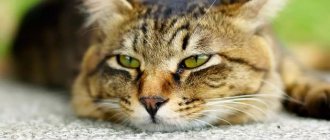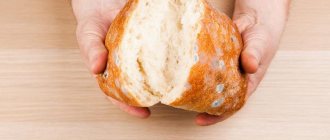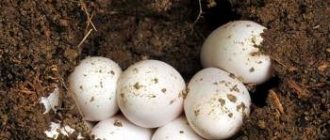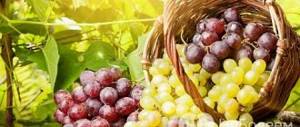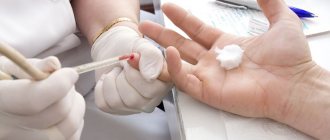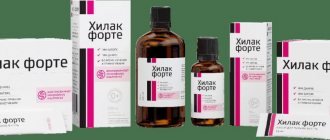Curare is a mysterious poison of the South American natives. Arrows lubricated with this composition helped the Indians not only hunt game, but were also used in confrontations between tribes.
The common name “curare” (literally translated as “liquid that quickly kills birds”) combines many toxic compounds. The ingredients in them may be different, depending on the purpose of the poison being used. Prey (or an enemy) can be killed with such poison, or it can be immobilized for some time. Even today, the inhabitants of the Southern Amazon use poisoned weapons in the process of hunting.
Story
In 1617, English traveler and writer Walter Raleigh went into the Orinoca jungle, accompanied by an interpreter and local Indians. Raleigh noticed that the animals they shot died from the slightest wounds inflicted by the arrows of the natives. When he asked to explain the mystery, they replied that the tips were soaked in a liquid called “curare,” which literally translated meant “a liquid that quickly kills birds.” Raleigh decided to test the effect of the poison on himself by making a small cut and dropping only two drops. This was enough for him to lose consciousness and after a long time to come to his senses.
Now that the secret of the natives has been revealed, curare is often used in medicine, affecting the nervous system of patients, relieving tension and fear. In 1942, Canadian doctors Harold Griffith and Enid Johnson first used curare for controlled muscle relaxation.
Historical facts
Literary mention of the poisonous compound used to lubricate arrows first appeared in the chronicle of King Ferdinand in 1516. A more detailed description can be found in the book of the traveler W. Reilly, who visited the vicinity of the Orenoco River (Venezuela) at the end of the 16th century.
A sample of the poison reached Europe in 1746. It was brought by Charles Marie de la Condamine, who returned from a ten-year expedition to South America. It is believed that from this moment active research into the composition of Curare began.
Numerous experiments on animals already in the 19th century showed that the effect of the poison is based on the muscle relaxation (muscle relaxing) properties of its components.
Subspecies
Tubo-curare (Pipe curare)
The extract is placed in bamboo tubes 25 cm long and used to lubricate arrows when shooting with a bow when hunting small animals. The main components are alkaloids from the root of Chondrodendron tomentosum Ruiz et Pav. family Menispermaceae
Since curare, packaged in bamboo tubes, had the most powerful pharmacological effect, the main alkaloid was named tubocurarine (also known as tubarine). Its hydrochloride is used in surgery to relax skeletal muscles. Tubocurarine chloride is also used to treat tetanus and convulsions due to strychnine poisoning.
Pot-curare (Potted curare)
The extract is placed in small unfired clay pots and used for bird hunting. Small light arrows are cut from the veins of a palm leaf, the pointed tips of which are smeared with poison; the arrow is placed in a hollow bamboo tube that serves as a “gun”, and the arrow is blown, aimed at the bird, which, being hit by a silent arrow, falls like a stone. The bark of Strychnos castelniaeana Wedd is used for this purpose. and probably Chondrodendron species.
Calabash curare (Pumpkin curare)
Stored in the fruits of small tableware pumpkins. This extract is the most poisonous and is used for arrows and spear tips when hunting large animals and during military operations. The most important component of the extract are alkaloids from the bark of the highly poisonous plant Strychnos toxifera.[2]
How to prepare curare
The poison is prepared exclusively from fresh raw materials, and different combinations are used - leaves, bark, and roots. Dry plants are not dangerous.
The Indians practiced several methods of preparation, the basic principle is this: the crushed raw materials are placed in boiling water, brought to a boil, and then poured into designated vessels (bamboo stems, pumpkins or pots) and left to evaporate in the sun. Sometimes muramu root juice, a snake venom, was added. After the drug had been infused for a day, it was kept away from the sun.
Information about exotic plants and their properties is incredibly interesting, but no less interesting is information about everyone’s favorite potato - about its benefits and harm to the body. You can also learn a lot about the possibilities of using the classic spice cardamom in the treatment of various diseases, about the rich content of nutrients in the branches, roots and wood of the caragana bush.
Perhaps, dear readers, do you have any exclusive information about the legendary poison? Or did you have to use drugs based on it? Share your experience.
Effect of poison
The poison blocks the acetylcholine nicotinic receptors of the striated muscles, and therefore the muscles responsible for breathing, and death occurs from suffocation with almost unimpaired consciousness. With very small doses, it is possible to return to life by maintaining artificial respiration (the poison is excreted by the kidneys). A scratch in the skin is enough for poisoning. It is used in physiological practice to immobilize experimental animals. The active principle of the poison, d-tubocurarine, was widely used in surgery and traumatology as a muscle relaxant.
Use of the substance in medicine
Thanks to numerous studies, scientists were eventually able to find substances that could suppress the effects of bird venom. They are called Neostigmine and Physostigmine. You can also use any cholinesterase inhibitors for these purposes. But the use of curare for medicinal purposes has become much more interesting for doctors.
This idea is not new. South American Indian shamans often used curare for compresses and instead of diuretics. Modern scientists use poison to relax muscles, which makes it easier to perform surgical operations with increased muscle tone.
In addition, in the 1920s, the Italian scientist Bove was able to create a less dangerous variety of curare - the substance gallamine. The effect of this poison is easier to control and can be used with less risk to the health of patients. Gallamine is now a well-known drug for the treatment of Parkinson's disease.
The efforts of modern doctors are aimed at creating tablets that have the effect of curare. The drugs Elatin and Condelfin are taken orally to treat tetanus, hyperkinesis, multiple sclerosis and other diseases. In this case, paralysis of the respiratory system occurs last, therefore the danger to human life during the treatment course is minimal.
Mysterious selva
Curare is a poison, the secret of which the Indians carefully hid from the conquerors, which gave rise to many legends surrounding this mysterious toxin. Moreover, the vegetation along the rivers of South America, the Amazon and Orinoco, is incredibly rich. Research has shown that in these areas, in an area of just 2,000 square meters, about 500 different plants belonging to 50 families grew. The jungle itself, the natives with poisoned arrows, the mysterious poison from which they died a strange death - everything terrified the colonialists.
Vomit Nut
Until now, the natives of the Southern Amazon prefer to hunt with this poison. It is not surprising that the strongest composition is made in the area of the Solemoe River (the name translates as “poison”), a tributary of the Amazon.
The Indians of South America, during the period of their colonization by the Spanish conquistadors, extracted their poison for arrows and spears from strychnos. These are trees and vines. The evergreen tree from which the poison curare is obtained is called strychnine tree, or emetic tree, or chilibuha. It is this that serves as the source of the alkaloid strychnine.
Characteristic packaging
It should be noted right away that this product is sold in various packages. And according to the way in which it circulates, the poison is called pot, pipe and pumpkin, or pot-, tubo- and calabash-curare. Each package corresponds to a specific composition and plant from which curare (poison) is prepared. So, potted, stored in small pots made of unfired clay, is made from the bark of chilibuja castelneana. It is used for hunting birds. Small arrows cut from the veins of a palm leaf are dipped in this toxin and blown forcefully out of a bamboo tube.
The flight of such an arrow is inaudible for the bird, and there are no misses, because it is enough to just hit the bird with the arrow, and it falls down like a stone. Hunting larger animals requires different arrows and a bow, and the poison must be more potent. This poison, curare, is obtained from a tree called chondrodendron, which is a large woody vine. Trubokurare is so called because it used to be stored only in sealed bamboo tubes, but is now even exported in tin cans. The most powerful poison described, pumpkin poison, as the name implies, is stored in small pumpkins and is produced from poisonous chilibuha.
Video: more about the poisonous plant
If you are in search of high-quality toiletries and accessories, for example, plain or terry towels, then you should definitely find out more here. The range of products and prices will pleasantly surprise you. Please note that the retail price is indicated on the website, the minimum order is from 2000 rubles.
Read further:
Can pomegranate peels stop diarrhea?
Signs of kidney cancer
How to clean blood vessels with folk remedies
How to stop a young man from binge drinking
Alcoholic coma - concept, medical care, causes and consequences
Article rating:
( 1 ratings, average: 5.00 out of 5)
Share with friends:
You may also be interested in:
Classification of potent toxic substances - effect on the human body.
The most deadly poisons for humans.
Propylene glycol - the concept of what harm to the body?
Thiol poisons: what they are, where they are found, effects on humans
Source
Wikimedia Foundation. 2010.
See what “Curare Poison” is in other dictionaries:
CURARE is a strong poison, get. in South America from the plant Strychnos toxifera and S. guijanensis. Represented dark shiny resin. mass, aromatic smell and bitter taste. Savages used. for smearing arrows. Used in medicine. Dictionary of foreign words,... ... Dictionary of foreign words of the Russian language
CURARE - CURARE, the general name of potent poisons obtained by condensing aqueous extracts from some tropical plants of chilibuha and other species of the genus Strychnos (loganiaceae family). The active principle is alkaloids of the curarine group. They provide muscular ... Modern encyclopedia
CURARE is a strong poison obtained by condensing extracts from chilibuha and other plants of the loganiaceae family. Contains curarines. When it enters the bloodstream, it has a neuroparalytic effect. Used by the natives of South. America for poisoning arrows. Introduction... ... Big Encyclopedic Dictionary
Curare - CURARE, the general name of potent poisons obtained by condensing aqueous extracts from some tropical plants of chilibuha and other species of the genus Strychnos (family Loganiaceae). The active principle is alkaloids of the curarine group. They have a muscular ... Illustrated Encyclopedic Dictionary
CURARE - CURARE is a poisonous resinous extract obtained from various plants of the tropical regions of South America, from the genus Chondodendron and Strychnos. The active elements of this substance are ALKALOIDS. They cause muscle paralysis. Indians of South America... ... Scientific and technical encyclopedic dictionary
KURARE - KURARE, uncl., cf. (American vurari). A potent plant poison containing strychnine. Ushakov's explanatory dictionary. D.N. Ushakov. 1935 1940 ... Ushakov's Explanatory Dictionary
CURARE is the common name for muscle paralysis. poisons obtained by concentrating aqueous extracts of plants of the genera (Chondrodendron) family. Lunospermaceae (Menispermaceae), strychnos and some others. Used by the South Indians. America as a poison for... ... Biological encyclopedic dictionary
curare - noun, number of synonyms: 1 • poison (134) ASIS Dictionary of Synonyms. V.N. Trishin. 2013 ... Dictionary of synonyms
Curare is a South American arrow poison prepared primarily from the bark of the Strychnos toxifera plant. Indians in Guiana and along the banks of the Amazon River smear the ends of their arrows with this poison in order to more accurately kill the intended victim. Poison from subcutaneous tissue... ... Encyclopedia of Brockhaus and Efron

